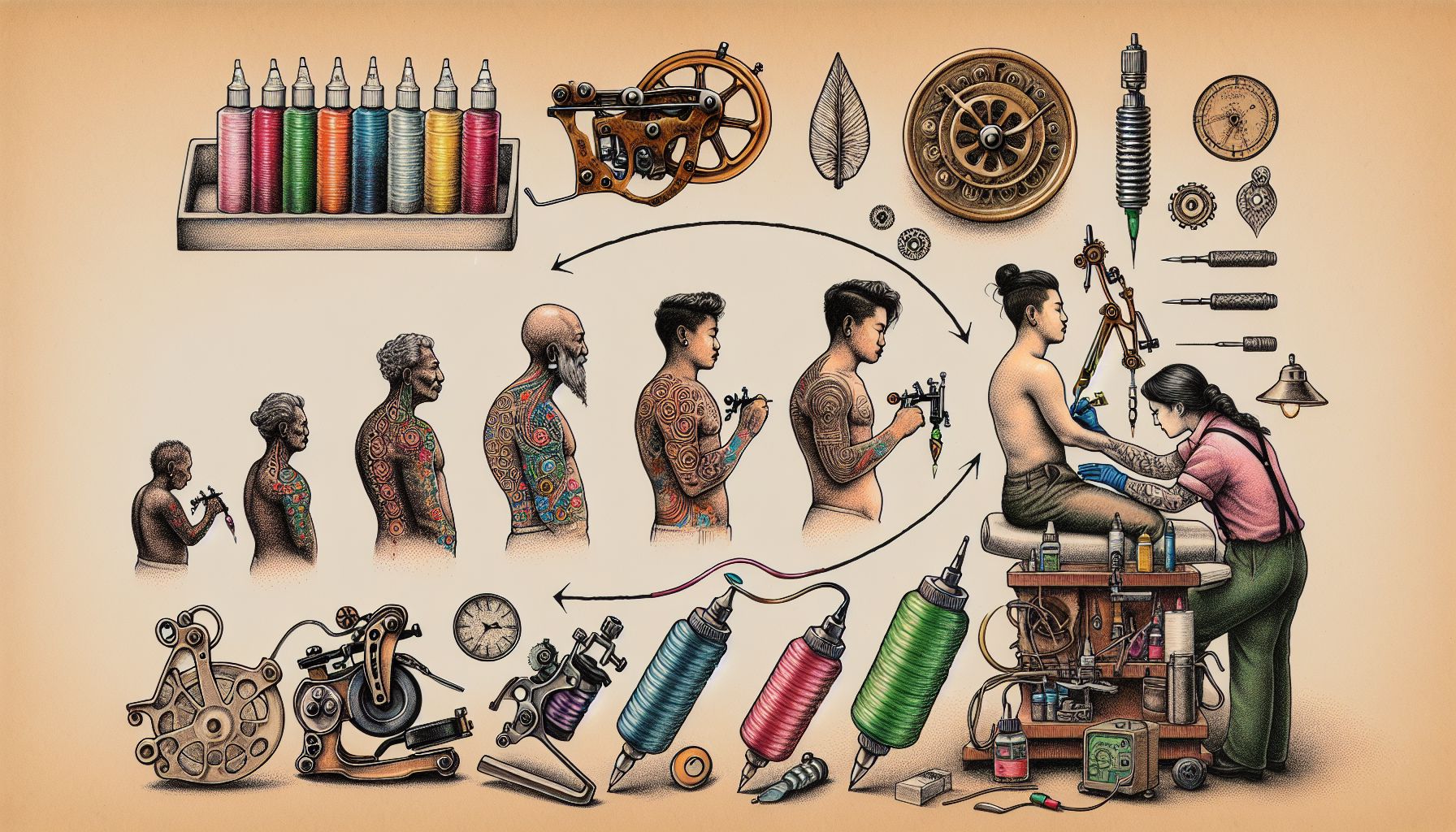In the dynamic world of tattooing, the importance of robust, long-lasting and vibrant tattoo inks cannot be overstated. A central element of tattoo supplies, these inks contribute significantly to the aesthetic appeal and longevity of a tattoo. As a seasoned tattoo artist turned online seller, I’ve developed an understanding of the intricate relationship between an artist and their tattoo supplies. My aim today is to shed light on the evolution, key features, and considerations of selecting tattoo inks.
The Evolution of Tattoo Ink: A Historical Glimpse
Tattooing has been an art form for centuries. Early tattoo artists used natural ingredients, such as charcoal and plant dyes, for tattoo inks. However, these inks were short-lived and prone to fading. Notably, the early 20th century saw the advent of modern tattoo inks created using metallic salts and industrial pigments, providing a longer lifespan and vibrant colors.
There has been a resurgence of natural and vegan tattoo inks in recent years. Anecdote from my years in the industry: In the early 2000s, I teamed up with an experienced chemist with a passion for tattooing. After years of research, we developed a range of organic, non-toxic color inks. This marked my first step in selling tattoo supplies, with a focus on prioritizing the health of both artists and clients while maintaining color richness and durability.
Key Features of High-Quality Tattoo Inks
While tattoo equipment is integral to a successful artisan, the quality of tattoo inks plays a significant role in the final outcome. High-quality inks provide rich, long-lasting colors and a lower risk of causing adverse reactions. Here are notable features that should be considered when choosing inks among tattoo supplies:
- Pigmentation: High pigmentation is essential for vibrant, true-to-tone colors that will stand the test of time.
- Viscosity: The thickness of the ink (viscosity) impacts the ease of application. Too thick, and it becomes difficult to work with; too thin, and it may lead to blotching.
- Safety: This is a non-negotiable feature. Ensure that inks meet or exceed safety and quality standards, are sterilized, and free from potentially harmful substances.
Considerations When Selecting Tattoo Inks
Navigating the vast market of tattoo inks can be overwhelming for seasoned and newbies alike. Here are some tips based on my personal and professional experience:
- Color Range: Enlarge your spectrum of creativity by having a wide array of colors. Artistically, more colors mean more opportunities for unique artwork.
- Brand Reputation: Reputable brands ensure more than just quality. They inspire confidence and assurance that the products comply with safety regulations.
- Feedback from Other Artists: Don’t shy away from engaging in conversations with fellow artists. Their experiences with different inks can provide invaluable insights and help you avoid potential pitfalls.
Conclusion: Tattoo Inks –The Backbone of Tattoo Supplies
Tattoo inks have come a long way since the days of primitive dyeing methods. As an essential component of tattoo supplies, they’ve evolved to meet higher safety standards, provide better durability, and offer an expansive color palette. Nevertheless, the journey to improve these inks is far from over. In the future, we may witness inks with improved skin tolerances, more vibrant colors, and better aging characteristics.
Finally, I end this with a word of advice, as someone who has ridden the waves of change in this industry. As a tattoo artist, remember that the success and longevity of your craft largely depend on the quality of your supplies. Therefore, taking the time to understand and choose the right tattoo inks for your kit is an investment into your artwork’s beauty, durability, and safety. Aim to master not just the art, but also the science of your tattoo supplies.


